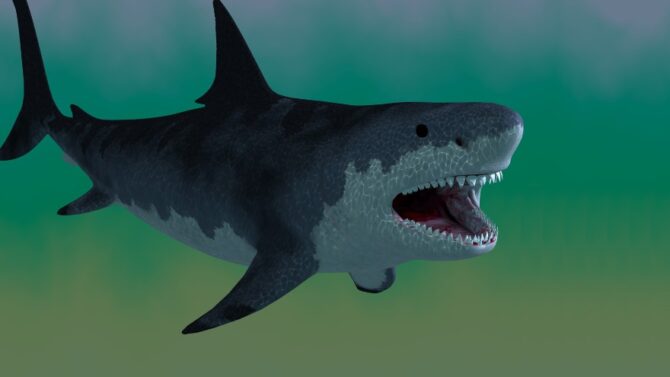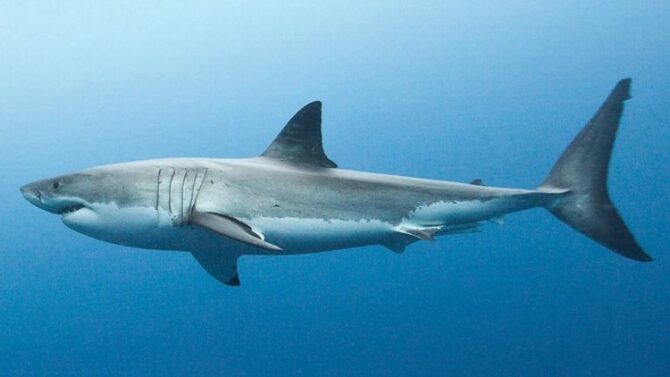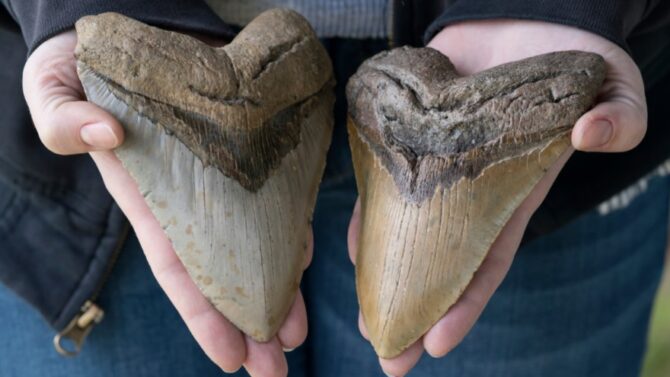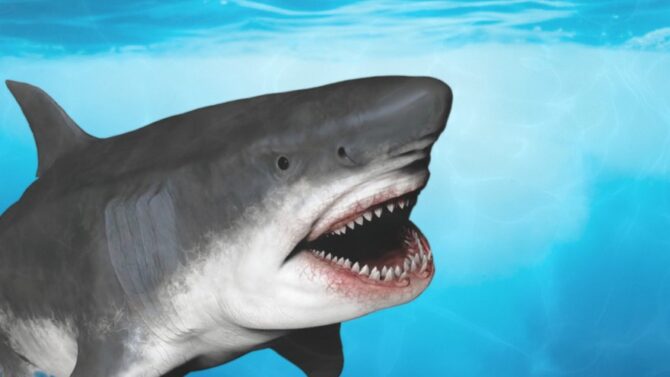The megalodon has long gone extinct, but its reputation lives on. A large mackerel shark, it once swam the waters many years ago till its unfortunate disappearance.
Now many enthusiasts scan the internet, looking for all they can find on the aquatic giant that once lived.
An example is you, and you’ve come to the right place.
There are a lot of interesting megalodon facts you can learn about, ranging from the meaning of the name, size, gender differences, behavior, and more.
Let’s take a look at ten mind-blowing facts about this impressive animal!
Top 10 Megalodon Facts & Information
1. We have the Greek to thank for the word “Megalodon”
The name Megalodon is the species name included in the binomial Otodus megalodon.
It stems from Greek and means “large tooth,” alluding to the sharp dentition that lines up the jaws.
The first scientific name of this creature was Carcharodon megalodon, as it was first placed in the genus Carcharodon, due to some similarities between it and the great white shark.
However, it has since changed to the Otodus genus.
2. The Megalodon is the largest fish that ever lived
There is much big extant fish today, the biggest of which is the whale shark.1
The latter weighs an impressive 21.5 tons and grows to 41.5 feet. However, it doesn’t match the megalodon.
The megalodon weighed up to 50 tons and got to a height of 60 feet!
For a better perspective, this is the weight and height of a railroad car. It would have been possible for humans to safely ride on the back.
Related: Blue Whale Vs. Megalodon: Who Would Win?
3. Its estimated bite force is also incredible

Given the megalodon’s jaw depiction, one can already expect its bite force to be strong, and it is.
The megalodon’s bite force measures up to 40,000 psi!
If that doesn’t seem big enough, consider that the Nile crocodile has the strongest bite force, which measures up to 5,000 psi.2
When you compare that with the megalodon, you know the extinct animal was not to be messed with.
4. Females were probably bigger
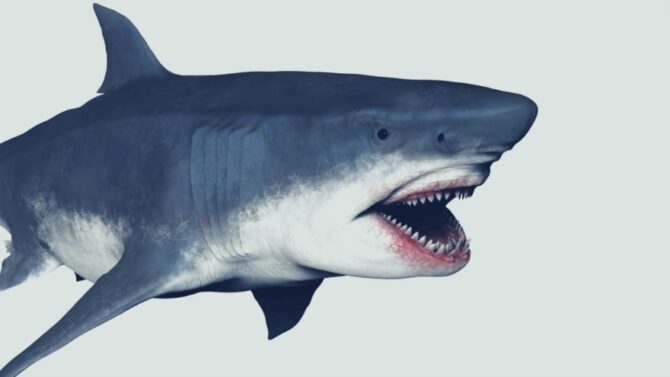
Generally, female sharks are better than males. This seems to be the case with the megalodon.
While both sexes are big, the female is twice as large as the male. She both weighs more and has more length.
Females measured between 44 to 56 feet in length, while males stopped short at an interval of 34 to 47 feet.
In weight, the female was up to 59.4 tons while the male was getting to 33.9 tons.
5. Megalodons and dinosaurs lived in different worlds
Just as we never met the dinosaurs and the megalodons, these two grandiose creatures didn’t meet.
Dinosaurs roamed the earth around 66 million years ago when they got extinct. The Megalodon wasn’t in existence till 23 million years.
So while we might assume that these two creatures filled the earth’s space in the same period, that wasn’t the case.
6. They built nurseries
Humans are not the only living beings capable of adding nurseries. Megalodons might have also been protective of their babies, enough to shield them.
Their pups were big, but they were still vulnerable to predators.
Thus, megalodon mothers gave birth close to the shore. Their babies remained in the nursery while the mothers stood guard.
In the nursery, the mothers were protected while the babies learned how to hunt and survive. They only left the nursery after getting stronger.
7. While the babies were vulnerable, they may have been cannibalistic
Cannibalism amongst animals is normal behavior, especially among infant siblings.3
This might have happened amongst the babies. Though we were not there to get direct evidence, experts made their studies and got to a conclusion by measuring the size.
Megalodon babies are huge, a point we’ve previously made. They got born already at 6 feet, about the height of a tall human.
Thus, it would have been hard for the mother to carry babies this big. Hence the conclusion that babies might have eaten themselves.
8. Megalodons occurred worldwide except Antarctica—at least, that’s what the fossils say
We only have the Megalodon’s teeth as evidence, but this alone gives ample information on the animal as a whole.
These fossils had a wide range, being discovered on every continent except Antarctica.
This isn’t surprising, given that even modern sharks aren’t keen on a sub-zero atmosphere.
The fossil discovery does make us wonder how this shark would have lived on different continents if they were still around.
9. Despite the rumors, Megalodons are truly extinct
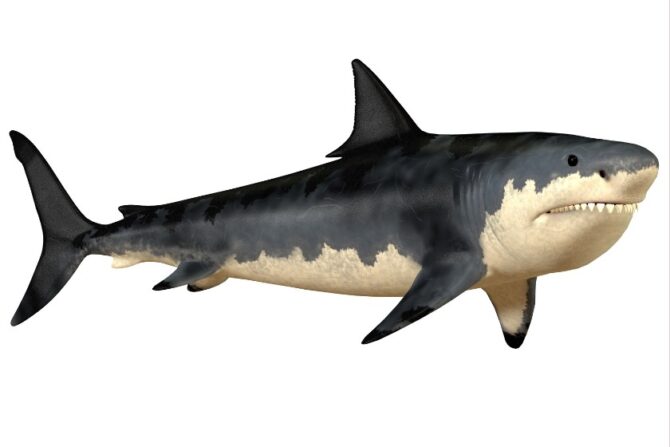
Rumors once sprang (and persist) that this species might still exist.
The reason for this is that up to 80% of the ocean is still undiscovered. Thus, the argument goes, how do we know this massive shark doesn’t exist in these uncharted waters?
However, the arguments don’t hold up for experts for different reasons.
They are huge aquatic animals, and how would they have stayed undiscovered all these years?
There has been no evidence of them still being around, so we remain, at best skeptical.
Also, the undiscovered waters are mainly in the subzero environments that these species don’t live in.
10. There are different theories as to why they got extinct
The extinction of megalodons happened after 20 million years of existence.
While we don’t have direct evidence of what caused the extinction, some theories have emerged to explain the disappearance of these creatures.
One such theory is climate change. Experts who hold to this suggest that the weather became colder, leading the world, in general, to get colder.
This didn’t leave a habitable world for the fish to survive in, leading to its extinction.
The cold may have also led to a decrease in food sources as fish died off.
Another proposed reason for the extinction is a supernova, which affected the world and killed off 1/3 of its population.4
The radioactivity from this supernova might have possibly caused cancer and subsequent death.
Conclusion
Megalodons were once populous on the earth years after the days of the dinosaurs.
They are known to be large sea creatures, and to date, no other fish has gotten to their level.
We trust you learned something new from these facts!
References & Notes
- What is the biggest fish in the ocean? National Ocean Service.
- Which animals have the strongest bite? BBC Science Focus Magazine.
- Cannibalism in animals is more common than you think. National Geographic.
- What Is a Supernova? NASA Space Place.
